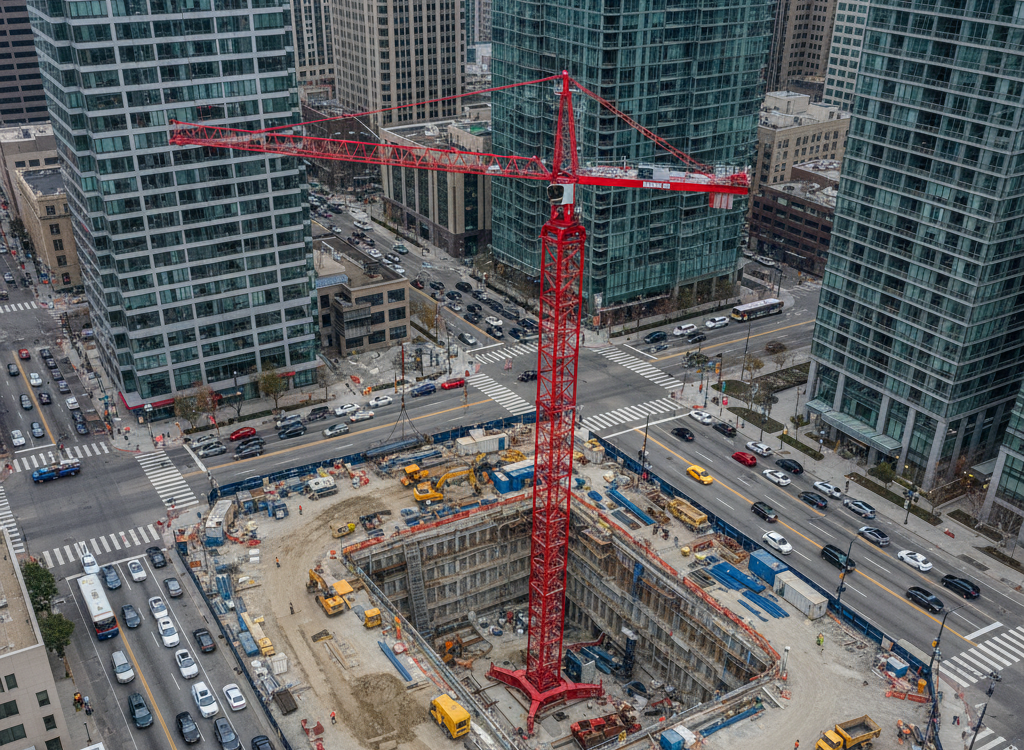
Why Construction Noise and Vibration Monitoring Needs Expert Analysis
Construction noise is becoming one of the most immediate—and often most frustrating—environmental challenges of urban life. Toronto, for example, is experiencing a construction boom fueled by the need to accommodate a growing population and expand transit networks. But this progress comes with a cost: projects now regularly border sensitive receptors like homes, schools, and hospitals, making noise and vibration a lived experience for many residents, not just a line in a permit.
When construction occurs in these proximity-sensitive environments:
- It becomes more audible, frequent, and potentially disruptive.
- Residents are more likely to notice and report disturbances.
- Complaints, media scrutiny, and community tension can quickly escalate.
Why More Than Noise and Vibration Monitoring Matters
It can be tempting to think of noise and vibration monitoring as a simple checkbox: collect the data, meet minimum compliance, move on. But in today’s context, where the stakes are higher and public awareness is sharper, that approach is no longer enough. Sometimes, staying below a threshold is sufficient. But often, proactive communication, fast interpretation, and strategic flexibility make the difference between a project that stays on track and one that’s bogged down by delays and community pushback. This approach gathers early insights that keep construction on schedule and maintain public trust, something that noise and vibration monitoring data can’t deliver its own
The Limitations of Data-Only Systems
Not all monitoring systems are created equal. Many simply alert you after a number limit has been exceeded with little insight into how or why it happened. That reactive model can leave teams scrambling to respond to enforcement notices or public complaints. Worse, automated systems that are maintained with minimal or inexperienced oversight, lack the nuance and reliability needed to distinguish between real risk and explainable anomalies. AI technology can add tremendous benefit to a noise and vibration monitoring system, but without the right guidance, efficiency and accuracy are lost.
Without expert-led interpretation of noise and vibration monitoring data, even minor exceedances can spiral into major issues.
Best Practices for Construction Noise and Vibration Monitoring
Meeting compliance doesn’t always equal project success. The most effective monitoring programs go beyond the basics and are built on five core principles:
Flexible, Adaptable Systems
Every project is different. Monitoring equipment should allow for threshold changes, custom reporting, and real-time feedback as site conditions evolve. Static systems can quickly become outdated when work shifts or environmental conditions change.
Expert-Led Interpretation
Data without interpretation is just noise. Experienced consultants understand how to contextualize noise and vibration monitoring results, identify trends, and distinguish between true exceedances and acceptable variation. They also bring a deep understanding of regional regulations and permit conditions. These insights combined with understanding the realities of construction will provide practical, actionable support and prevent wasted time and effort.
Holistic Planning
Noise and vibration management should begin well before construction starts. Establishing baselines, modeling potential impacts, and identifying mitigation strategies early leads to fewer surprises—and fewer complaints—down the road before noise and vibration monitoring begins.
Clear Reporting and Communication
Transparent reporting builds trust with stakeholders, regulators, and the public. Whether it’s daily summaries or community updates, effective communication keeps everyone aligned and reduces the risk of unexpected escalations.
Proactive Risk Management
The best noise and vibration monitoring programs don’t just wait for problems to happen—they anticipate them. Trend analysis and early warning indicators allow for course corrections before issues impact your timeline, budget, or public reputation.
The Role of Experience and Flexibility
The technology you use matters, but the people behind it matter more. It’s the experience of your acoustic team that ensures you’re not just reacting to problems, but staying ahead of them with efforts that make a measurable difference.
How We Help
At Aercoustics, we bring more than just monitoring equipment. We bring decades of consulting experience across some of the most challenging environments in Canada. From transit megaprojects to urban infill developments and residential design, we know how to tailor acoustic strategies to high-density, high-scrutiny contexts.
We offer:
- Advanced, adaptable systems for noise and vibration monitoring.
- Expert review, interpretation, and reporting.
- Stakeholder communication support and community engagement guidance.
- Strategic planning and mitigation development tailored to your timeline and risk profile.
